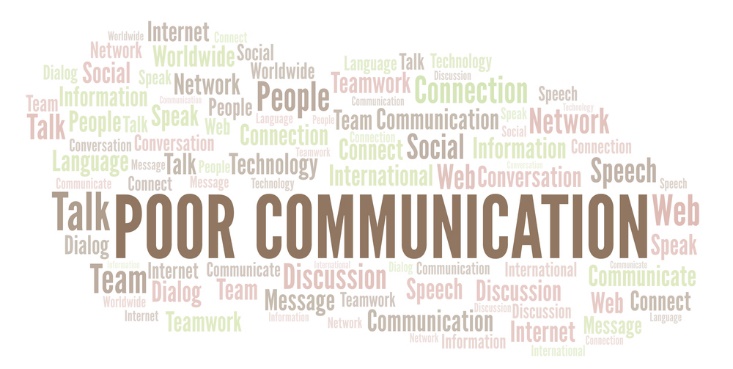
The Hidden Cost of Poor Communication (And How to Fix It)
Let’s be honest—most businesses don’t fail because of a bad product or a flawed strategy. They fail, slowly and quietly, because people stop communicating clearly.
It doesn’t happen overnight. A vague email here, a passive-aggressive comment there. An expectation left unspoken. A question left unanswered. Before you know it, trust erodes, people disengage, projects stall, and progress crawls to a halt.
Poor communication isn’t dramatic, but it’s expensive. It drains energy, destroys relationships, and chips away at your bottom line in ways most leaders never fully realize—until it’s too late.
What Poor Communication Is Actually Costing You
1. Time and Productivity Go Out the Window
When people aren’t clear on what’s expected of them, they waste time guessing, clarifying, and re-doing work. Meetings drag on longer than they should. Projects run in circles. Decisions get stuck.
Research backs this up—poor communication leads directly to missed deadlines, wasted resources, and unnecessary stress. And all that wasted time? It’s costing you money, even if you can’t see it on a balance sheet right away.
2. Trust Takes a Hit
Communication breakdowns aren’t just operational—they’re emotional. When people don’t feel heard, understood, or informed, trust fades. Teams stop sharing ideas. Employees start disengaging. Clients start looking elsewhere.
Trust isn’t lost through big betrayals; it’s lost through a hundred tiny moments where communication falls short. And once it’s gone, it’s a long, expensive road to earn it back.
3. The Financial Toll Adds Up (Fast)
If you think poor communication is just a “soft” issue, think again. Studies show companies lose hundreds of thousands of dollars each year—sometimes millions—because of misunderstandings, poor collaboration, and lack of clarity.
Whether it’s lost sales, rework, turnover, or missed opportunities, communication gaps bleed revenue. Most businesses just don’t notice until the damage is done.
Why Understanding Communication Styles Matters
One of the biggest mistakes leaders make? Assuming everyone communicates like they do. Spoiler: they don’t.
Tools like DISC assessments and Emotional Intelligence (EQ) profiles can help you understand your natural communication style—and how others prefer to communicate, too.
DISC at a Glance:
D (Dominance): Fast, direct, focused on results.
I (Influence): Social, upbeat, relationship-driven.
S (Steadiness): Supportive, steady, values harmony.
C (Conscientiousness): Detail-oriented, cautious, data-driven.
Knowing your team’s styles helps you avoid unnecessary friction. What motivates a “D” might overwhelm an “S.” What energizes an “I” might exhaust a “C.”
Emotional Intelligence (EQ):
EQ is your ability to recognize and manage emotions—both yours and others’. High EQ leaders communicate with empathy and clarity. Low EQ leaders? They tend to trigger defensiveness, misread situations, and escalate problems.
When you combine DISC insights with emotional intelligence, communication becomes less about guessing and more about connection.
How to Build a Culture Where Communication Thrives
Fixing communication isn’t about sending more emails or scheduling more meetings. It’s about creating a culture where clarity and transparency are expected—and modeled from the top down.
Here’s how to start:
1. Get Clear on Expectations
If people don’t know what success looks like, they can’t hit the target. Spell it out: who owns what, how decisions get made, and how success is measured.
2. Lead by Example
If you want honesty and transparency, you have to model it. Share updates. Own your mistakes. Ask for feedback. Be open, even when it’s uncomfortable. That’s how you build psychological safety—and trust.
3. Streamline Your Channels
Communication chaos kills clarity. Decide what tools are for what purpose: Slack for quick updates, email for formal communication, project tools for tasks, meetings for alignment. Keep it consistent so nothing gets lost.
Simple Ways to Improve Communication Right Now
Want to make immediate progress? Start here:
1. Use a Feedback Framework
Tools like SBI (Situation-Behavior-Impact) help keep feedback focused and productive. No drama, no personal attacks—just clear, actionable input.
2. Run Better Meetings
No one loves meetings, but they’re necessary. Make them worth people’s time: have clear agendas, stick to time limits, and walk away with action steps.
3. Listen More (and Better)
Most people listen to respond, not to understand. Teach your team the power of active listening. Fewer misunderstandings. Better connections.
4. Audit Your Communication
Look at how your team communicates. What’s working? What’s not? Where are the breakdowns happening? Address the gaps before they become habits.
Final Thought
Communication isn’t just a leadership skill—it’s a leadership responsibility. When you fix poor communication, everything improves: trust, engagement, productivity, and yes, your bottom line.
If you’re ready to stop the silent leaks and create a culture where communication works, let’s talk. It’s one of the smartest investments you can make in your business.
Dr. Patty Ann
